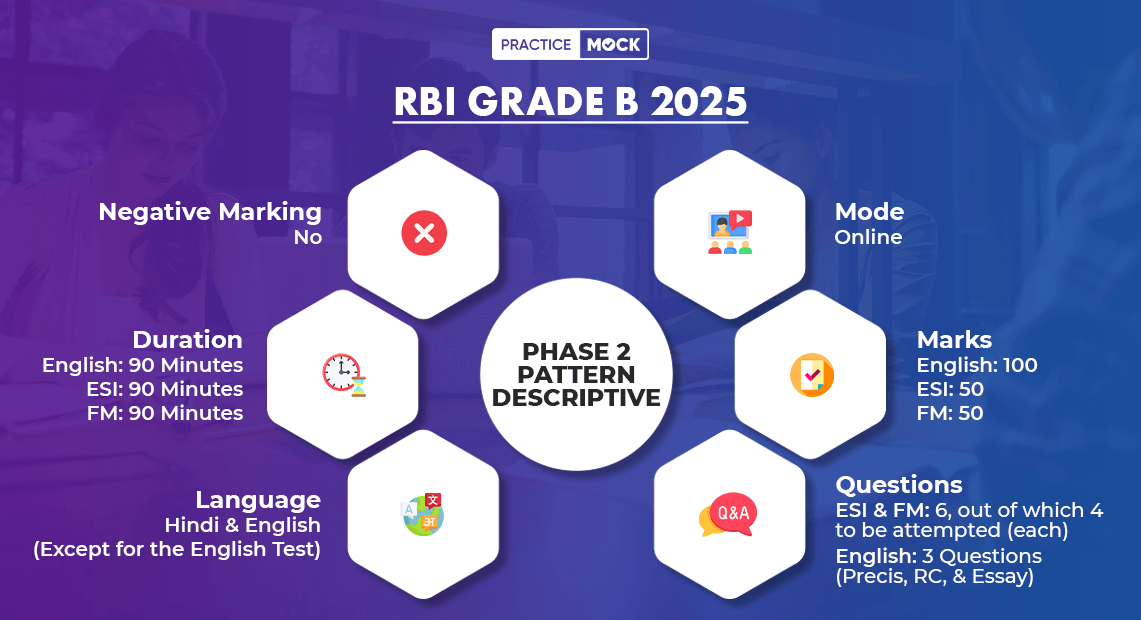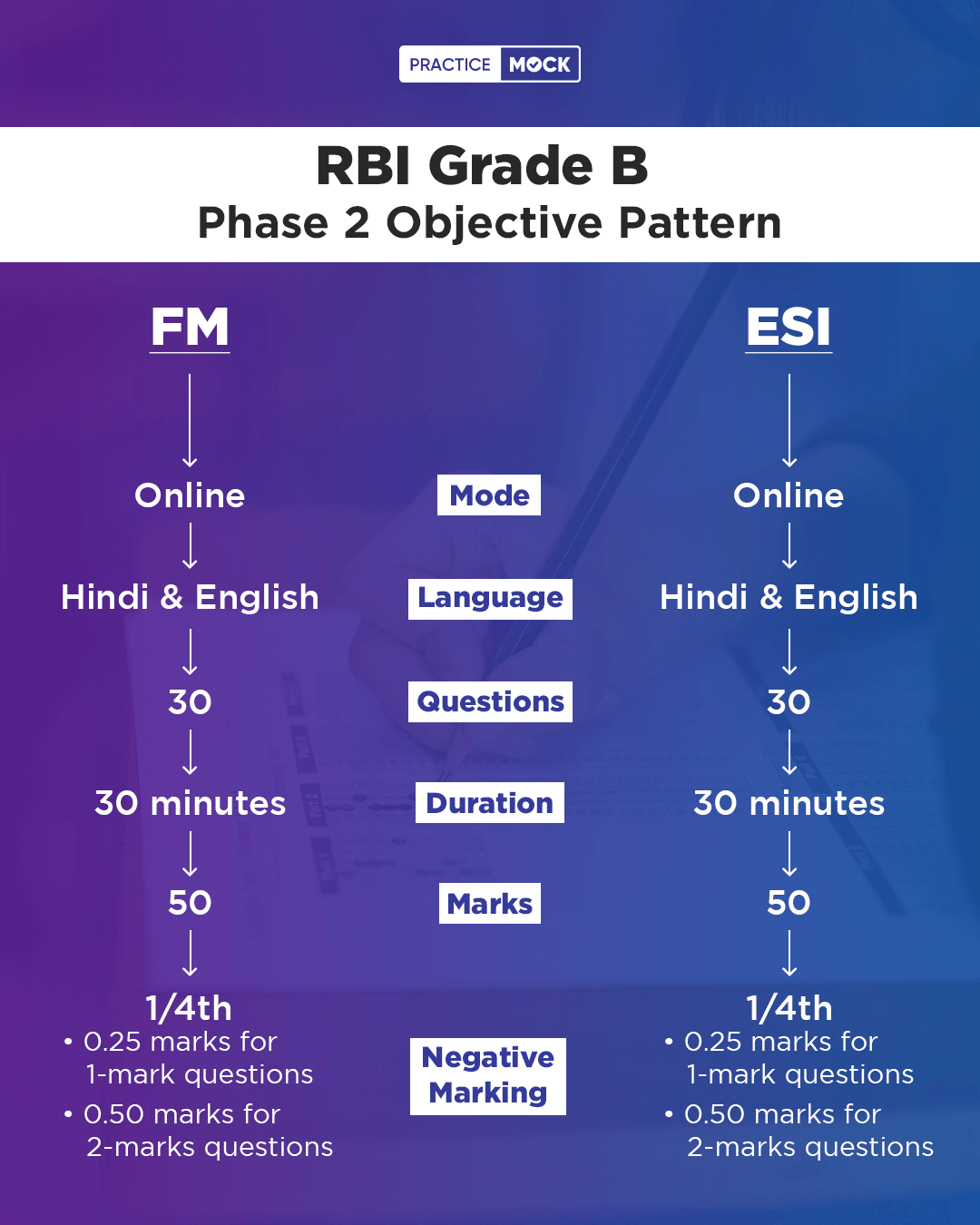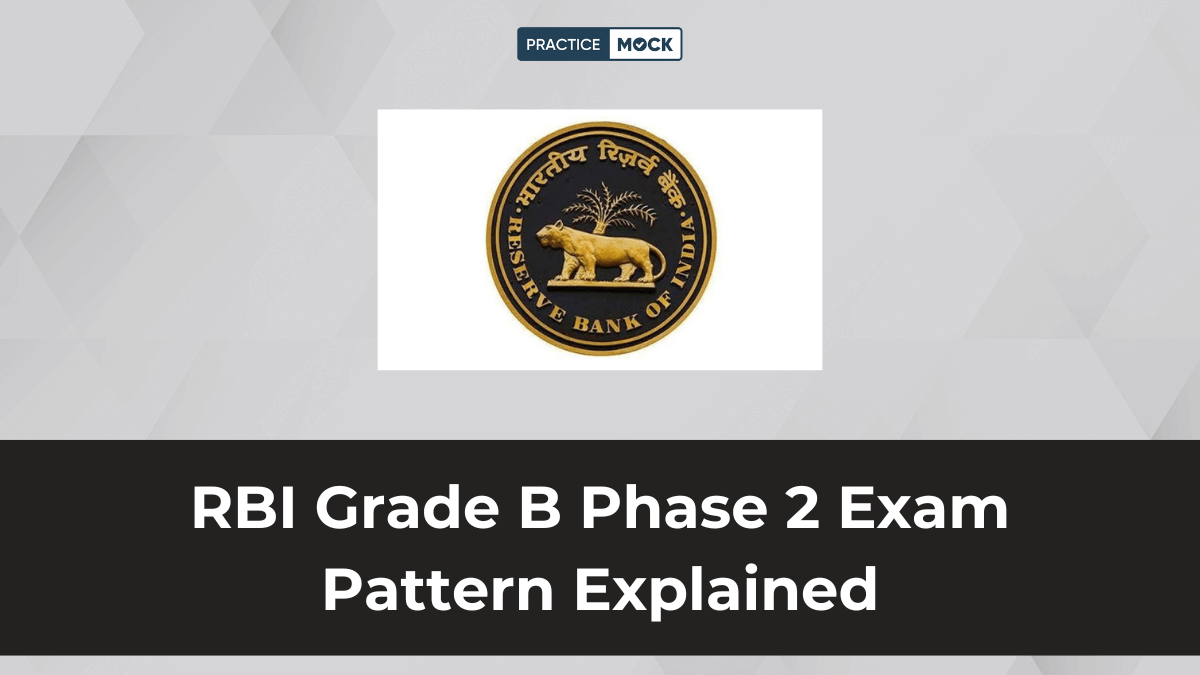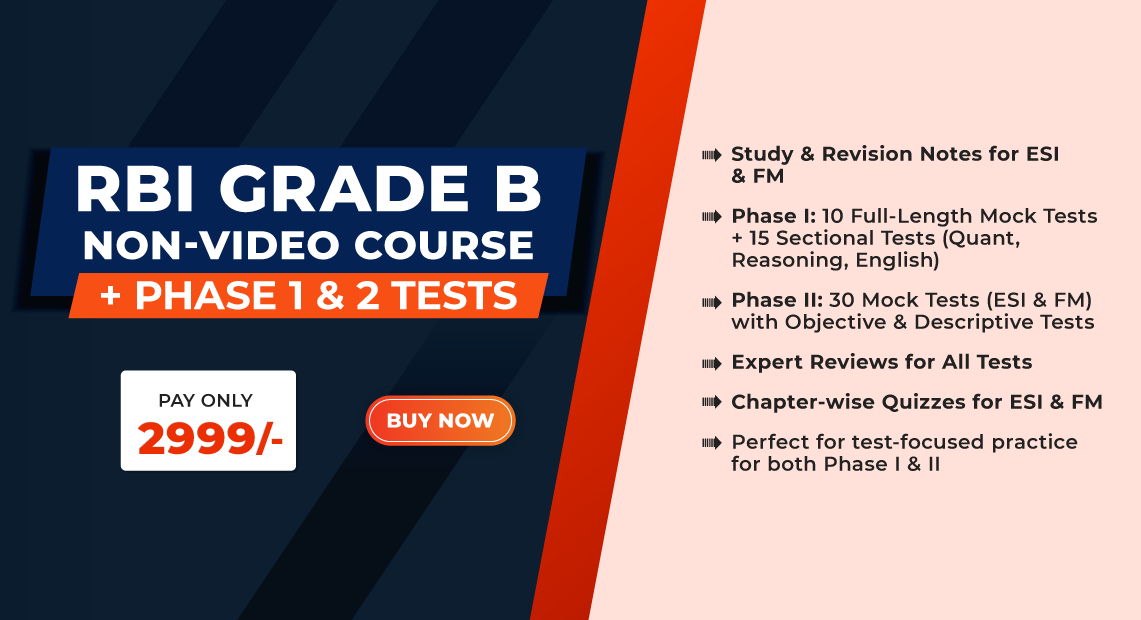If you want to appear for the upcoming RBI Grade B exam, you will have to face Phase 2 after Phase 1. The RBI Grade B Phase 2 pattern provides information about the number of papers, subjects, marking scheme, the minimum cut-off marks (if any), time duration, and the mode of the exam in a structured form. This entire information gives an aspirant a reference point to begin their exam preparation and ensures that their study materials are aligned with the latest RBI Grade B Phase 2 exam pattern. In this blog, we will deeply understand the RBI Grade B Phase 2 exam pattern and learn how, by understanding it thoroughly, we can create a perfect preparation schedule based on that information.
RBI Grade B Phase 2 Exam Pattern
The RBI Grade B Phase 2 exam consists of three papers: Papers 1, 2, and 3. The first paper is called Economic & Social Issues (ESI), the second one is known as English and the 3rd paper is called Finance & Management (FM). All the papers are equally important when it comes to clearing the RBI Grade B Phase 2 exam. Check out the table below to learn about the type of papers (objective or Descriptive), the total no. of questions each part attracts, and the total marks they offer.
| RBI Grade B 2024 Phase 2 Pattern | ||||
| Paper | Type | No. of Questions | Time(minutes) | Total Marks |
| Paper-1 Economic and Social Issues | 50% Objective | 30 | 30 | 100 |
| 50% Descriptive | 6, out of which 4 to be attempted | 90 | ||
| Paper-2 Descriptive English | Descriptive | 3 Questions (Precis, RC, & Essay) | 90 | 100 |
| Paper-3 Finance and Management | 50% Objective | 30 | 30 | 100 |
| 50% Descriptive | 6, out of which 4 to be attempted | 90 | ||
Note: PwBD candidates, with 40% or more disability, who have physical limitations to type/write including that of speed shall be allowed compensatory time of 20 minutes per hour of the examination whether availing the facility of a scribe or not.

Additional Details of RBI Grade B Phase 2 Pattern
Take a look at the table below know some more important details related to the RBI Grade B Manager Phase 2 exam pattern:
| RBI Grade B 2024 Phase 2 Pattern Other Details | |
| Mode | Online |
| Language | Hindi & English for both objective and descriptive papers (Except for the test of English) |
| Total Marks | 300 |
| Cut-Off Marks | Decided as per the calling ratio |
| Negative Marking (Objective questions) | 1/4th for every wrong answer (0.25 for 1 mark questions & 0.50 for 2 mark questions) |

How to Practically Understand the RBI Grade B Phase 2 Exam Pattern?
After clearing the RBI Grade B Phase 2 exam, the candidates get shortlisted for a psychometric test and interview round. This stage tests the candidate’s knowledge, and skills, and if they are suitable for the RBI Grade B officer’s post or not. But all this is only possible after clearing the Phases 1 and 2. A good understanding of the exam pattern at the very beginning of the exam preparation plays a pivotal role in crafting an effective study schedule. Therefore, if you’ve just made up your mind to be a Grade A officer and want to start your preparation for the upcoming RBI Grade B 2025 exam you need to deeply and practically understand the exam pattern by practicing the RBI Grade B 2025 Phase 2 mock tests. Grab the best online course packed with the latest mock tests to fully understand the exam pattern and make the best study schedule.
10 Tips for Creating a Perfect RBI Grade B Exam Preparation Schedule
It is essential to create a very easy-to-follow and highly effective study timetable or schedule for RBI Grade B preparation. Such a timetable helps you stay focused and organized throughout the preparation. Here are 10 practical tips that, if followed, can help you create a balanced and efficient study schedule and start your preparation without any delay.
1. Understand the Exam Pattern thoroughly
You should know which subjects are part of the exam, what the marking scheme is (how much negative marking there is), and how much time you will have to complete the entire exam.
2. Divide your time smartly in your schedule
Divide your time smartly between different subjects. Know the difficulty level of each subject and accordingly dedicate specific hours of your day to those subjects or topics.
3. Pay more heed to important topics
Although no topic in the syllabus is unimportant, some are more important than others. So try to finish high-weightage subjects first and dedicate more time and energy to them.
4. Include breaks in your study plan
Make sure to include breaks in your schedule so you can avoid burnout. Try to take short breaks every 1 to 2 hours in your study plan.
5. Set achievable targets
Set achievable goals, and don’t aim too high. Try to make your short-term and long-term targets something you can accomplish, as achieving each target will boost your confidence.
6. Make Revision an essential part of your preparation
Include regular revision sessions in your schedule at intervals. Revision is the exercise through which what you learned yesterday can stay with you today, and what you learn today will stay with you tomorrow. So never skip revision, knowingly or unknowingly.
7. Practice and revise via RBI Grade B 2025 Mock tests
Therefore, try to take as many mock tests as possible and experience exam conditions through them. If you don’t attempt mocks daily, at least take one mock test a week and fully analyze the feedback. Take a free mock test and see how it presents your reality and improves your answer-giving ability.
8. Give ample time to Phase 1 & Phase 2
Maintain a balance between Phase 1 and Phase 2 in your schedule, meaning give sufficient time to prepare for both. When the exam is near, focus more on Phase 2, as you will have to face Phase 2 immediately after Phase 1.
9. Adjust your schedule based on your weaknesses
This means giving more time to the subjects or topics you are struggling with.
10. Be ready to stay flexible
This means making required changes whenever necessary. For example, you can adjust your schedule according to the exam dates or your progress. This is the hallmark of an excellent study schedule.
- Sign Up on Practicemock for Updated Current Affairs, Free Topic Tests and Free Mini Mocks
- Sign Up Here to Download Free Study Material
Free Mock Tests for the Upcoming Exams
- IBPS PO Free Mock Test
- RBI Grade B Free Mock Test
- IBPS SO Free Mock Test
- NABARD Grade A Free Mock Test
- SSC CGL Free Mock Test
- IBPS Clerk Free Mock Test
- IBPS RRB PO Free Mock Test
- IBPS RRB Clerk Free Mock Test
- RRB NTPC Free Mock Test
- SSC MTS Free Mock Test
- SSC Strenographer Free Mock Test
- GATE Mechanical Free Mock Test
- GATE Civil Free Mock Test
- RRB ALP Free Mock Test
- SSC CPO Free Mock Test
- AFCAT Free Mock Test
- SEBI Grade A Free Mock Test
- IFSCA Grade A Free Mock Test
- RRB JE Free Mock Test
- Free Banking Live Test
- Free SSC Live Test





